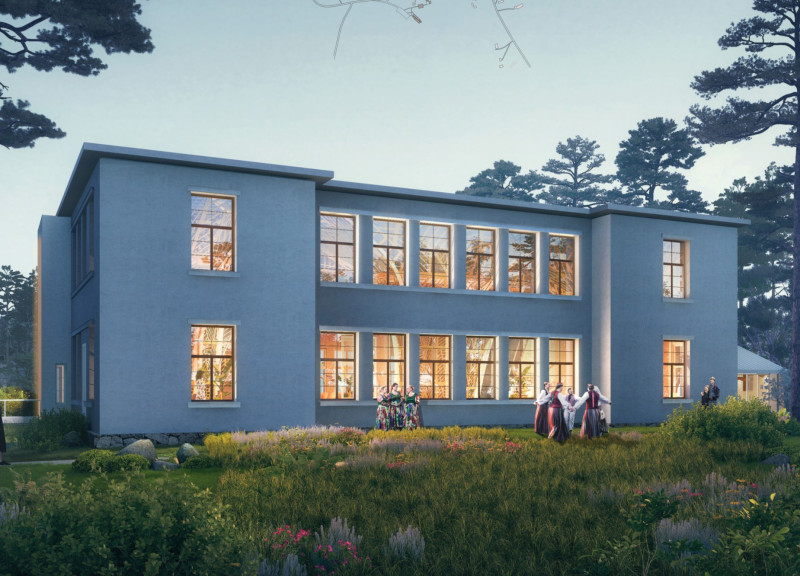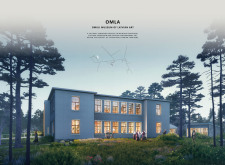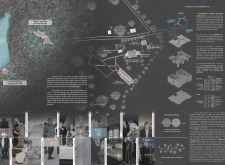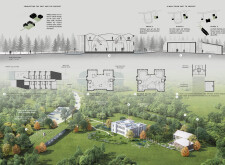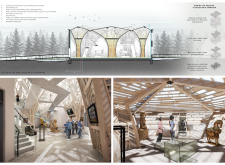5 key facts about this project
The Omuli Museum of Latvian Art is located in the North Latvia Biosphere Reserve, recognized by UNESCO for its ecological significance. The museum serves to both preserve traditional Latvian and Livonian cultural expressions and encourage the development of contemporary art. The design aims to create a space that connects the community with its cultural heritage while also engaging with the surrounding landscape.
Architectural Language and Spatial Configuration
The layout of the museum is designed to promote interaction. Spaces within the building encourage visitors to explore and engage with the art on display. By focusing on movement and flow, the design establishes a connection between the works of art and the viewers. The architectural choices are guided by the natural backdrop of the biosphere, which influences both the appearance and functionality of the museum.
Sustainability Features
Sustainability is an important aspect of the design. The museum features a rainwater collection system that captures runoff from the roof. This water is directed to constructed wetlands, allowing for effective water management. The wetlands enhance the ecological footprint of the facility, while the variety of plants used helps purify the water. Such features underline the dedication to environmental responsibility.
Structural Considerations and Energy Efficiency
In terms of structure, the museum includes building-integrated photovoltaics, also known as BIPV, within its roofing system. These panels generate electricity for the building, supporting efforts to achieve net neutral energy use. The design meets Passiv Haus standards, meaning it specializes in energy conservation through good insulation and the use of a geothermal heat pump for heating and cooling. The construction involves removing old roofing and interiors, leading to the installation of a new timber frame while keeping the existing shell, which respects the site’s historical context.
Cultural Revitalization and Community Engagement
The museum aims to revive Livonian culture, which is at risk of fading away. Programming includes opportunities for artists in residence, allowing for collaboration that blends old cultural narratives with contemporary expressions. The design supports dynamic exhibitions, fostering exploration and engagement.
An elevated floor system and displacement air distribution enhance comfort for those visiting the space. The careful planning and integration of ecological elements contribute to making the museum a vital part of the North Latvia Biosphere Reserve, inviting visitors to immerse themselves in both art and nature.


